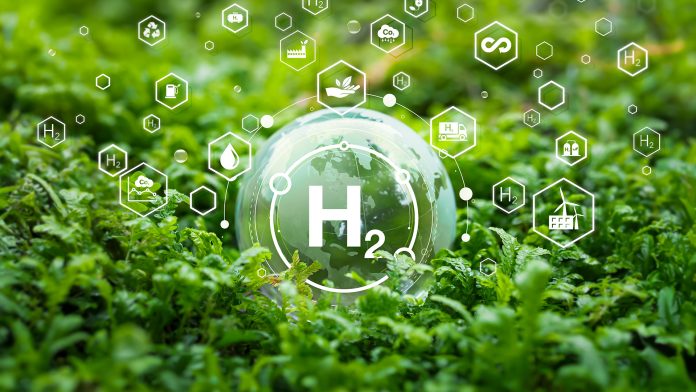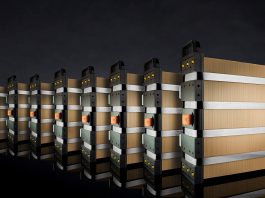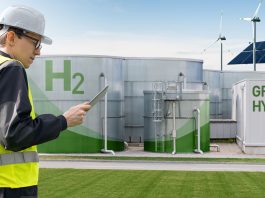Water electrolysis offers a path to generate green hydrogen, which can be powered by renewables and clean electricity.
The green hydrogen generation process needs cathode and anode catalysts to accelerate the otherwise inefficient reactions of water splitting and recombination into hydrogen and oxygen.
One of the most promising implementations of water electrolysis is the proton-exchange-membrane (PEM), which can produce green hydrogen by combining high rates and high energy efficiency.
Difficulties faced with water electrolysis processes
To date, water electrolysis, and in particular PEM, has required catalysts based on scarce, rare elements, such as platinum and iridium.
Only a few compounds combine the required activity and stability in the harsh chemical environment imposed by this reaction.
In search of possible solutions, a team of scientists developed a novel way to confer activity and stability to an iridium-free catalyst by harnessing water’s yet unexplored properties.
For the first time, the new catalyst achieves stability in PEM water electrolysis under industrial conditions without the use of iridium.
Overcoming harsh chemical environments
Intense research on the look for non-iridium catalysts has led to new insights into the reaction mechanisms and degradation, especially with the use of probes that could study the catalysts during operation combined with computational models.
This led to promising green hydrogen generation using manganese and cobalt oxide-based materials and exploiting different structures, compositions, and dopants to modify the catalysts’ physicochemical properties.
García de Arquer, who worked on the experiment, explained: “We designed a new material that actively involves the ingredients of the reaction (water and its fragments) in its structure.
“We found that the incorporation of water and water fragments into the catalyst structure can be tailored to shield the catalyst at these challenging conditions, thus enabling stable operation at the high current densities that are relevant for industrial applications.”
The delamination process for green hydrogen generation
To obtain the catalyst, the team looked into a particular cobalt oxide: cobalt-tungsten oxide (CoWO4).
On this starting material, they designed a delamination process using basic water solutions whereby tungsten oxides (WO42-) would be removed from the lattice and exchanged by water (H2O) and hydroxyl (OH–) groups in a basic environment.
This process could be tuned to incorporate different amounts of H2O and OH– into the catalyst, which would then be incorporated into the anode electrodes.
Then, they assembled the delaminated catalyst into a PEM reactor.
Even though the stability time is still far from the current industrial PEMs, this represents a big step towards making them not dependent on iridium or similar elements.
In particular, their work brings new insights for water electrolysis PEM design, as it highlights the potential to address catalyst engineering from another perspective by actively exploiting the properties of water for green hydrogen generation.









